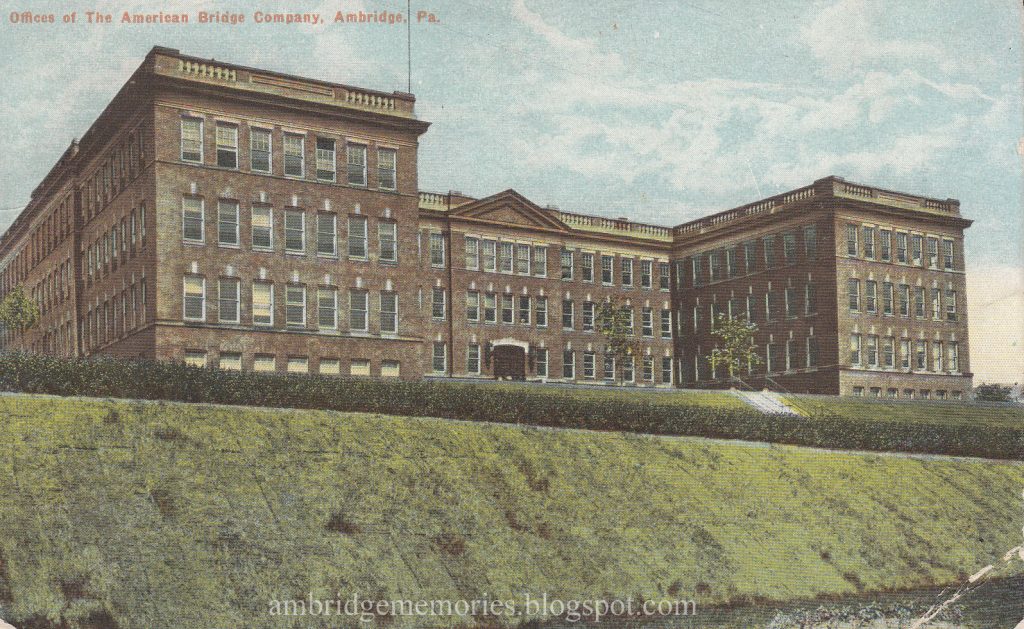Archives

The Rich History of Ambridge, Pennsylvania and the American Bridge Company – Featured Archive
The Rich History of Ambridge, Pennsylvania and the American Bridge Company – Featured Archive https://www.southlandholdings.com/wp-content/uploads/2024/06/AmericanBridgeOffice_postcard_0001_WM-1024x629.jpg 1024 629 Southland Holdings Southland Holdings https://www.southlandholdings.com/wp-content/uploads/2024/06/AmericanBridgeOffice_postcard_0001_WM-1024x629.jpgThe Rich History of Ambridge, Pennsylvania and the American Bridge Company
On June 8, 2024, Ambridge celebrated the 200-year anniversary of the roots of their town. Originally known as Economy, the town still embraces their origins featuring the Old Economy Village. In 1903, when American Bridge moved to town, many things changed and the once quiet Christian town turned into the largest steel manufacturing area in the world.
The Origins of the Harmony Society
Before Ambridge became synonymous with steel and bridges, it was the home of the Harmony Society, a devout Christian communal group from Germany. Founded by George Rapp in 1804, the Harmonists initially settled in Butler County, Pennsylvania. Seeking fertile land and better opportunities, they moved westward to the Indiana Territory in 1815, establishing a community there until 1824.
In 1824, the Harmonists returned to Pennsylvania, purchasing 3,000 acres of virgin forest in Beaver County. Here, they founded their third and final community, which they named “Economy.” This settlement was characterized by its prosperous agriculture, textile production, and strict communal living. Economy thrived for many years, becoming a model of communal success in America through trade and farming prowess.
The Birth of the American Bridge Company
Fast forward to 1900, the dawn of the 20th century, when industrialization was transforming America. J.P. Morgan, one of the most influential financiers of the era, orchestrated the creation of the American Bridge Company by merging 28 smaller steel companies. This consolidation aimed to harness the collective strength of these companies, making AB a titan in the steel fabrication and manufacturing industries.
In 1903, AB completed the construction of a state-of-the-art fabricating and manufacturing facility in southwestern Pennsylvania. This facility was built on land bought from the Harmony Society and was the largest of its kind in the world at the time. The establishment of this plant led to the birth of a surrounding town, aptly named Ambridge—a mixture of “American” and “Bridge.” American Bridge’s arrival in the area also marked the ending of the Harmonists. By 1905 the Harmony Society was dissolved due to their beliefs and vows of celibacy.
Ambridge: A Town Built on Steel
Ambridge quickly grew around the booming American Bridge Company plant. The plant’s output was prodigious, contributing steel to some of the most iconic structures of the 20th century. The Empire State Building, the San Francisco – Oakland Bay Bridge, and numerous LSTs (Landing Ship, Tanks) used during World War II were all products of the steel manufactured in Ambridge. This industrial prowess cemented Ambridge’s place in history as a crucial player in America’s infrastructural development.
The American Bridge Company was integral to Ambridge’s economy and identity for nearly eight decades. However, by 1982, changes in the global economy and shifts in the steel industry led AB to close its Ambridge plant. This departure marked the end of an era for the town, which had to reinvent itself in the face of new economic realities.
The Parade
On June 8th, Ambridge honored its multifaceted history with a parade that celebrated 200 years since the founding of Economy by the Harmony Society. This parade is not just a commemoration of the town’s industrial achievements but also a tribute to the Harmonists who laid the early foundations of the community. The Old Economy Village, which is home to the original Harmonist Church and homes, is a vibrant area and hosted many events for families and residents. It is also a reminder of how the early days of the town looked. As the Harmony Society’s influence waned, the rise of the American Bridge Company brought a new wave of residents and development, transforming Economy into Ambridge. The parade is a celebration of the past, present and future of this historic town. American Bridge and Southland were honored to return to the town and reconnect with the town that played such a pivotal role in its development.
- Posted In:
- Archives


